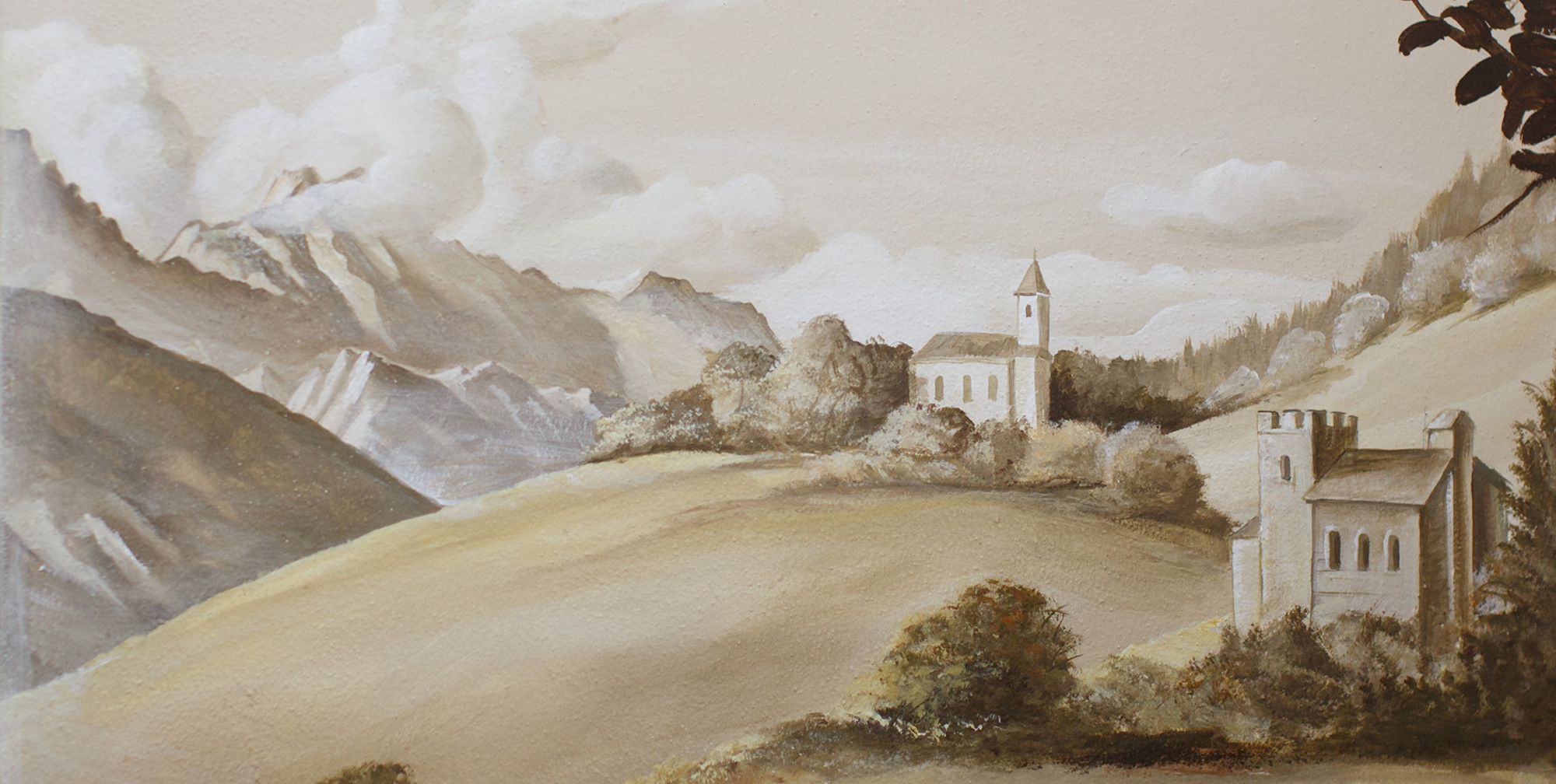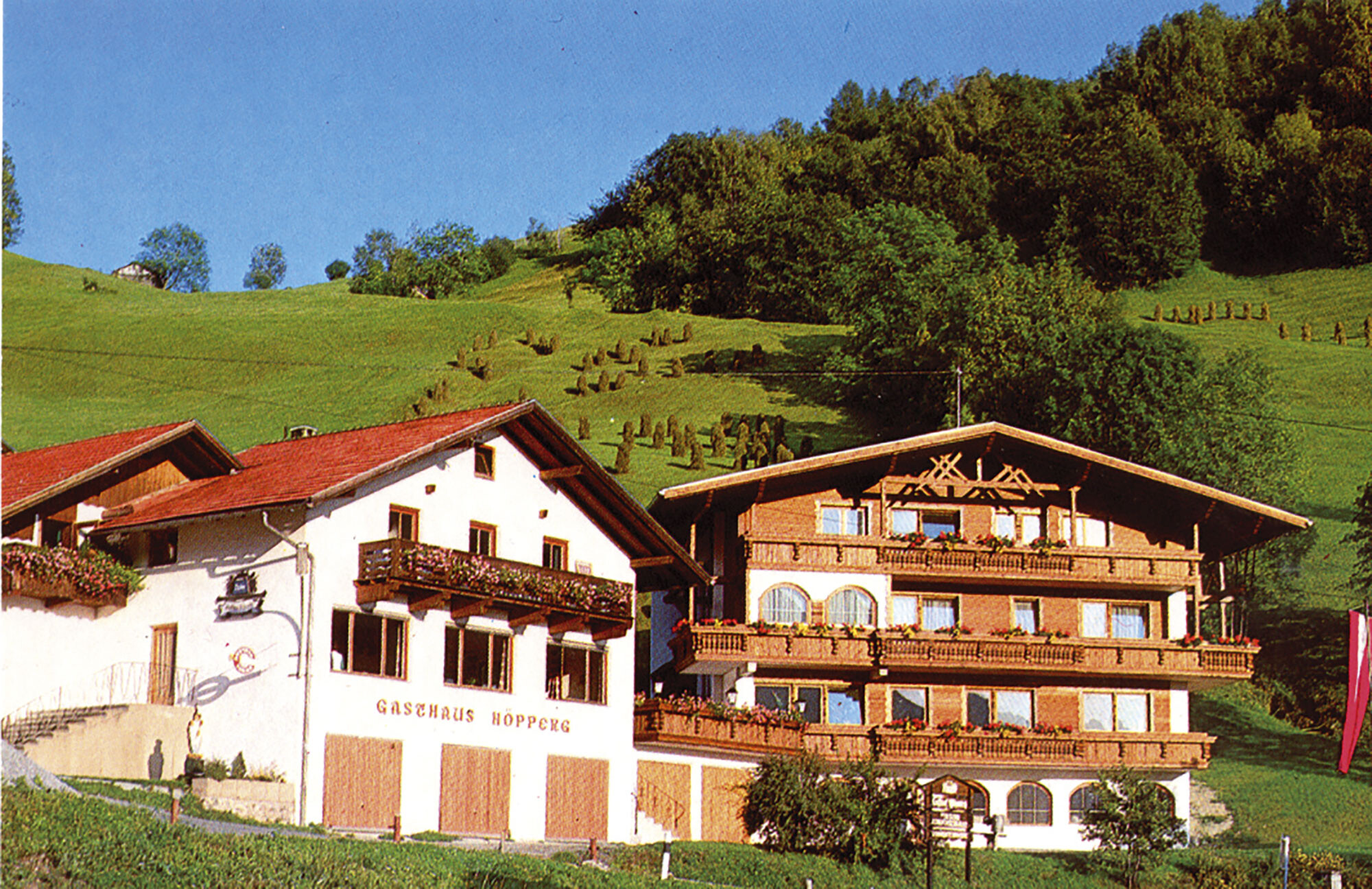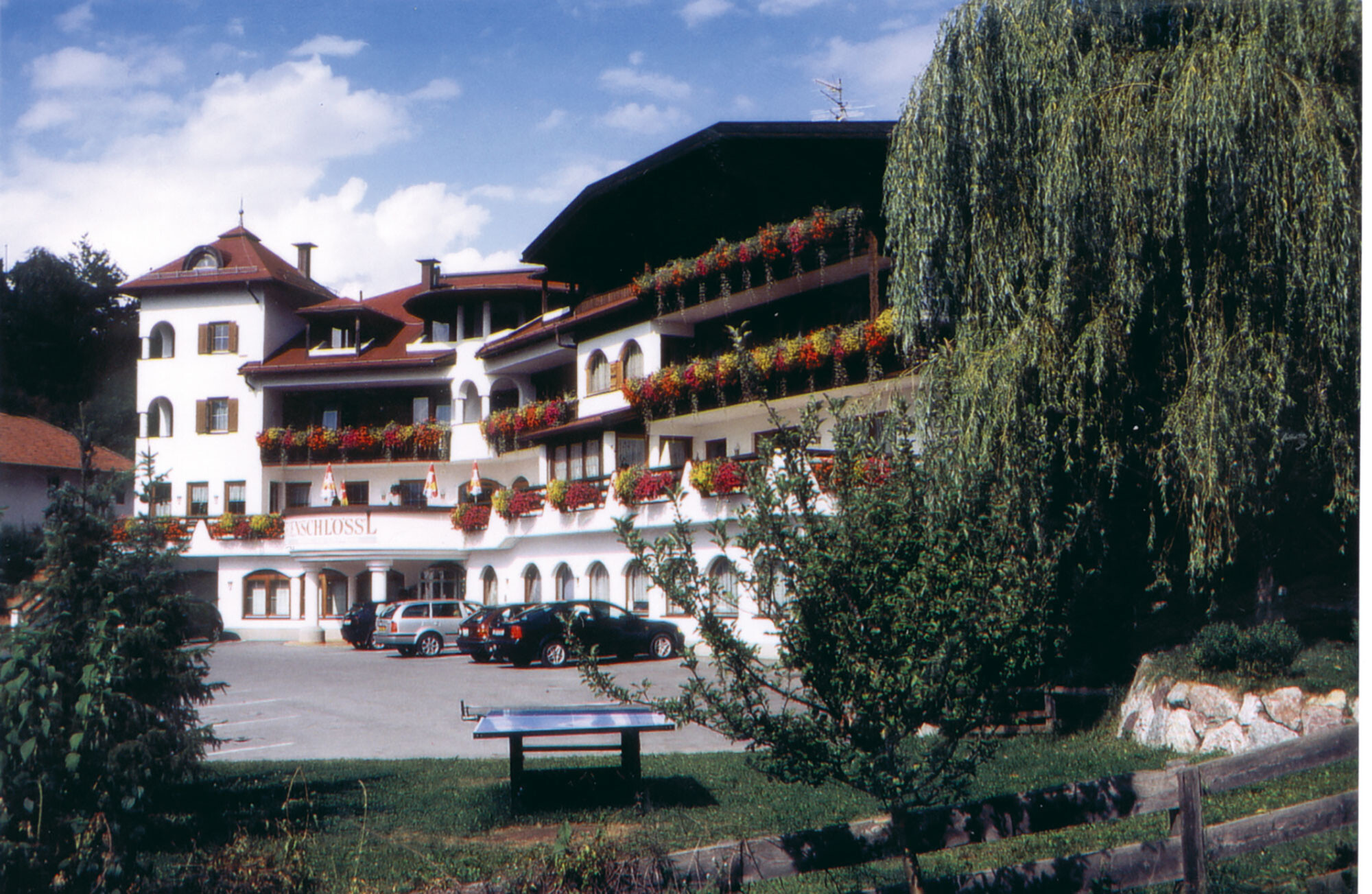HISTORY OF THE SCHLÖSSL
A hotel with tradition
The foundations for the current ‘Schlössl’ were laid in 1938 by Ernst Prantl (+ 1966) with the building of a corner store. This store provided supplies to the local population. The store was also attached to a restaurant but nobody could ever have suspected back then what developments would ensue.
The so-called ‘Wirtshaus am Höpperg’ was originally a social and community centre and was/is a popular meeting place for relaxation-seekers and travellers. The close proximity to the village church led to numerous weddings and family and church celebrations taking place here and in 1959, Ernst Prantl’s sister-in-law Ida Prantl (+ 2005) decided to add a dining room and 4 guest rooms to the building. An additional 3 rooms as well as storage areas and sanitation facilities were added in 1962. And from 1980 – 1982, an additional 11 guest rooms and 2 apartments were built.
Given the ever-increasing numbers of tourists in summer in particular, Elisabeth and Hubert Prantl – Plieschnig decided to fully redevelop the existing guesthouse and attached lodgings in 1990 to create a modern hotel facility with 28 guest rooms. During this redevelopment work, we were regrettably forced to let go of the successfully managed corner store.
The name of ‘Ferienschlössl’ on the Haimingerberg also came about at this time.
This name change dated back to a historical occurrence involving Duke Friedrich IV who stayed here in 1415.
The site underwent considerable expansion in 2004 and now offers the highest levels of comfort to meet a range of requirements with its 4 suites, 2 junior suites, 3 family rooms with separate bedrooms and 33 double rooms. The indoor pool, wellness area, underground parking garage and current Schlössl gardens were also added in 2004.
The current ‘Schlössl’ is the result of much ongoing maintenance work and investment.
We are very proud of this and look forward to welcoming and looking after many more guests at the ‘Schlössl’ in the future.
To mark our 80th anniversary in 2017, we are taking a 3 generation tour of the Prantl-Plieschnig family.
ONE UPON A TIME ...
Duke Friedrich IV was the youngest son of the Habsburg Duke Leopold IV.
The events of the Council of Constance (1414 – 1418), convened by King Sigismund, plagued the life of Friedrich during the years that followed and led to him being dubbed ‘Friedrich of the empty pockets’. His tense personal relationship with the king deteriorated even further when Friedrich sided with Pope Johannes XXIII. He helped Johannes on his journey across his land from Constance and on his flight from the Council – threatening the existence of the Council. King Sigismund placed Friedrich under an imperial ban. He submitted to the king in-front of the Council and was taken prisoner in Constance.
After close to a year in prison, Friedrich managed to escape. He headed to Bludenz via the still snowy Arlberg mountain. Here he was welcomed and taken in by the loyal Hans von Müllinen from the Schloss Berneck at the entrance to the Kaunertal valley.
During a rhyme play performed by the Duke in Landeck, Frederick noticed that the fate of an expelled duke in the play made quite an impression on the people. So he disclosed his identity and was greeted with cheers. Despite this, he still had to hide frequently. He is also known to have stayed in Widum zu Flaurling. From there he escaped past the Schloss Petersberg castle and up to the Höppberg mountain. Tired of the stress and constantly having to hide, he took a rest at the site of the current Ferienschlössl and exclaimed: “Ah if only I had a castle!“ Centuries later a castle was built on this very spot.
Since he could have been spotted by his persecutors on the Höppberg, he spent a few days hiding in a simple wooden hut in the forest, close to this spot. This location below the Brandsee lake is still known today as ‘Beim Fürstenhäusl’ (near the duke’s hut).
Following lengthy negotiations in Constance, Sigismund cancelled the imperial ban over Friedrich in 1418 and gave him back his possessions and a substantial sum of money. Clever financial politics and efficient governance, paired with the start of mining in Tyrol, transformed ‘Friedrich of the empty pockets’ into a rich duke. His inheritance was handed down to son Sigmund, who went by the name ‘rich in coins’.


![[Translate to EN:] Geschichtliches vom Schlössl im Ötztal](/fileadmin/_processed_/8/7/csm_ferienschloessl-geschichte_cbe8dca896.jpg)

